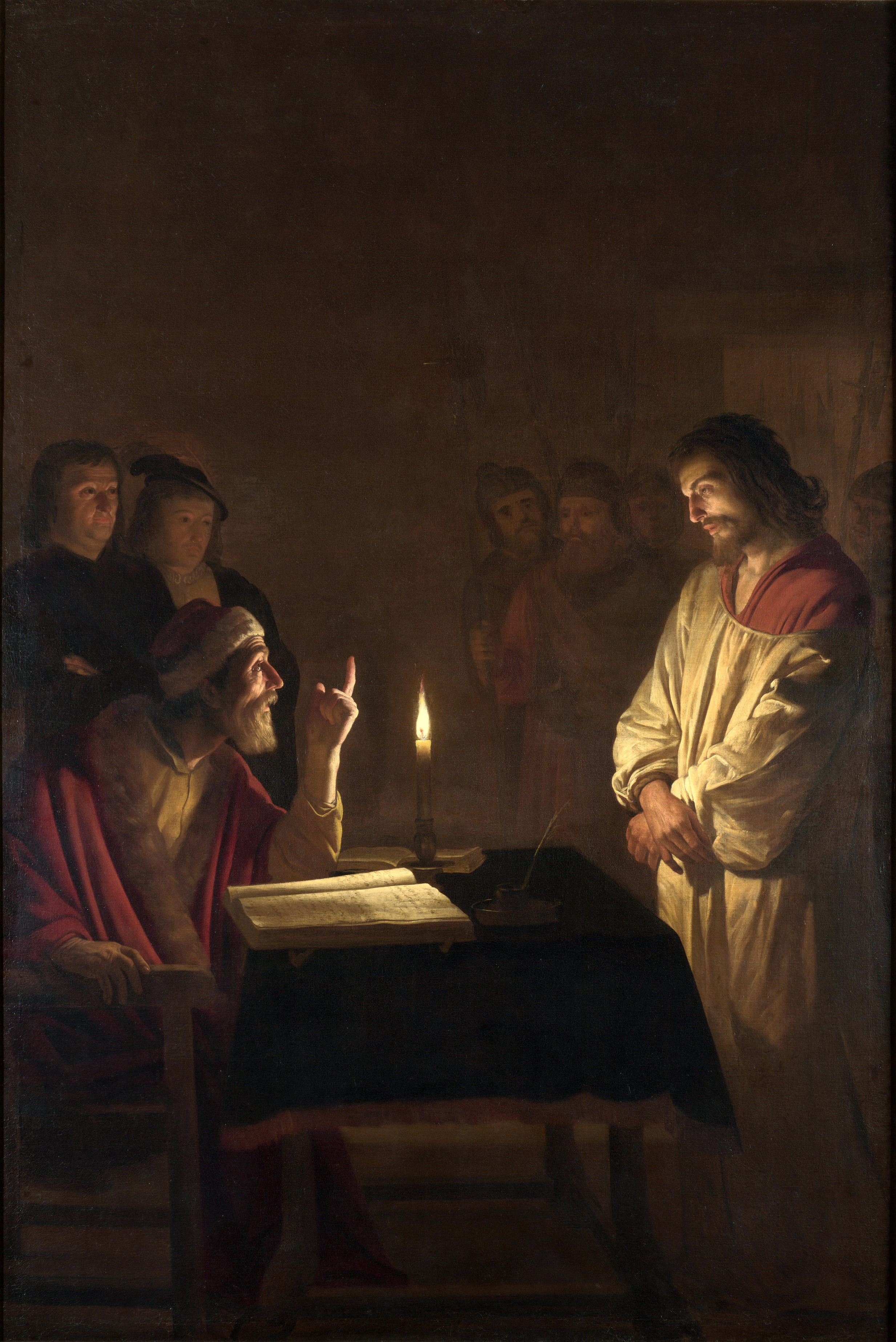This large, atmospheric painting depicts a moment in the Passion: Christ’s trial before the Sanhedrin (a Jewish judicial body). Honthorst has used a muted palette with dramatic lighting, eliminating unnecessary details. The composition is symmetrically balanced around the lit candle on the central table: the shimmering flame illuminates the faces of Christ and the seated man facing him, but not much else. The picture hints at how the artist acquired the nickname Gherardo delle Notti (Gerard of the nights) from the Italians.
The identity of this seated figure has been a subject of debate. When Joachim von Sandrart, Honthorst’s pupil and biographer, saw this painting in the Giustiniani collection in Rome in 1628, he described its subject as Christ before Pilate, the Roman governor of Judea. In the inventory of the Giustiniani family made up in 1638, it is recorded as Christ before the priest Caiaphas. Another argument suggests that Christ is before Annas, a different priest before whom Christ was brought for judgement. Christ before the High Priest seems to be a good compromise, although most art historians tend to think the Giustiniani inventory was right and Honthorst indeed depicted Christ before Caiaphas.
Honthorst’s arrival in Rome in 1610 more or less coincided with the death of the highly influential Caravaggio. The style developed by the Dutch artist was very much based on that of the Italian master and his followers. Honthorst only had to cross the street from the palace of Marchese Vincenzo Giustiniani, the likely patron of this picture, to see some of Caravaggio’s masterpieces in the Contarelli Chapel of the church of San Luigi dei Francesi. Honthorst lived in Giustiniani’s house in these years and absorbed the style of Caravaggio and other painters, subsequently passing on their manner when he returned to his native Utrecht.
Giustiniani’s collection in Rome included a painting that must have also been on Honthorst’s radar when he painted Christ Before the High Priest. Luca Cambiaso painted Christ before Caiaphas lit by two candles that can be dated to after 1570, now in Cambiaso’s native Genoa (Museo dell’Accademia Ligustica di Belle Arti). The Utrecht painter must have been motivated to compete with the great Italian masters, resulting in a picture that, in its striking simplicity, is arguably more successful than Cambiaso’s slightly crowded depiction of this decisive moment in the life of Christ.
- Clinton Pittman
P.S. Here you can get to know more about the Caravaggisti, artists who followed Caravaggio's unique painting manner.


 Gerard van Honthorst
Gerard van Honthorst